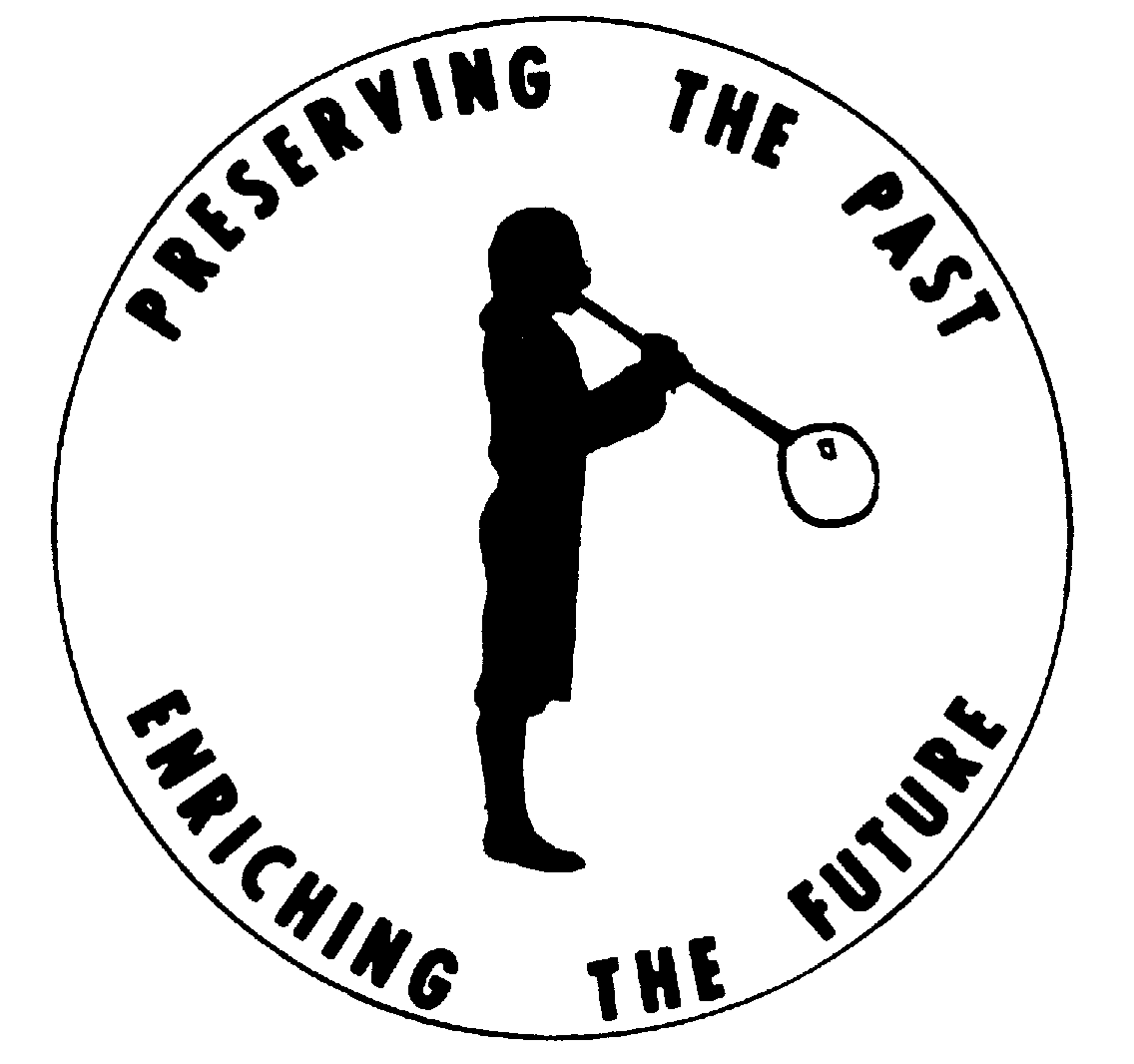
 |
Sand Lake Historical SocietyWho is Charlotte Carmon, and
|
 |
Charlotte Carmon just might be considered Sand Lake’s first town historian; we don’t know for sure. Generally, Harold Tifft is considered Sand Lake’s first town historian (SEE: Images of America; Sand Lake Revisited, p. 117; note also that Harold Tifft’s name appears on the WWI Honor Roll monument at Sand Lake Veterans Park). But, apparently in that same or similar role, it was Charlotte who, per request from New York State, compiled, typed and submitted service records of those from Sand Lake who served in the War. We don’t know much about Charlotte, other than she was apparently an Averill Park resident, daughter of Civil War veteran Alfred Carmon, a vocalist who was also active in community activities and, for some brief period of time, a collector of school taxes. But we do owe her that debt for stepping up to collect these histories. Unfortunately, there are a few gaps in the surviving records from her. Given the alphabetical nature of the gaps, it is likely that some of the pages she submitted have gone astray in the past century or so. [See the notes she typed up and submitted] Why was this done at all? We need to backtrack a bit. Soon after war was declared on April 6, 1917, then-State Historian James Sullivan was assigned the task of documenting New York’s contribution to the war efforts. He and his staff contacted “historical and patriotic societies throughout the State, libraries, schools, colleges, and public officials of towns villages, and cities for their help. The ultimate goal was to be a comprehensive history of the State in the War. The New York State Library also initiated a similar effort with libraries across the state. In 1919, New York State Education Law was amended via Chapter 181 of the Laws of 1919, which was intended to establish local historians in the villages, towns and cities of the state. Local historians were asked to provide service records as well as individual citizens’ records of tasks on the home front. Those historians were also asked to collect relevant photographs, letters and other pertinent information. Success in this effort was mixed, although Rensselaer County did rather well, judging from the records in the State Archives. (Sullivan had estimated that a history would comprise thee volumes and over 1,000 pages. Sadly, that comprehensive history never materialized, primarily due to lack of funding.) Meanwhile, though, the State Archives holds these records, as well as over one million military service records of New Yorkers serving in the Army, Navy, Marines, and as nurses. The law is still in effect to this day, as part of §57.07 of Arts and Cultural Affairs Law:
§57.09 outlines the duties of the historians: It shall be the duty of each local historian, appointed as provided in the last section, in cooperation with the state historian, to collect and preserve material relating to the history of the political subdivision for which he or she is appointed, and to file such material in fireproof safes or vaults in the county, city, town or village offices. Such historian shall examine into the condition, classification and safety from fire of the public records of the public offices of such county, city, town or village, and shall call to the attention of the local authorities and the state historian any material of local historic value which should be acquired for preservation. He or she shall make an annual report, in the month of January, to the local appointing officer or officers and to the state historian of the work which has been accomplished during the preceding year…. Charlotte Carmon notwithstanding, again, Harold Tifft is considered Sand Lake’s first town historian, serving from 1954 until his death in 1959. (Note: the 1954 Town budget appropriated $50 for the historian, some $10 more than was appropriated for the dog warden!) Others who have served in that capacity include Joseph T. Sproule (1960-67), Mrs. Lillian Sproule (1968-72?), Mrs. Lillian Howarth (1972-78?), Madolyn Carpenter (1978-??; Elinor Zaki as deputy), Judy Rowe (with Mary French as deputy), and Bob Moore (2013-present). Reproduced here are her original typewritten notes (unfortunately, a few pages have gone astray over the years) regarding those Sand Lake men who served in World War I. -- from Historical Highlights, Volume 45, Number 2, Fall 2018 |
|||||||
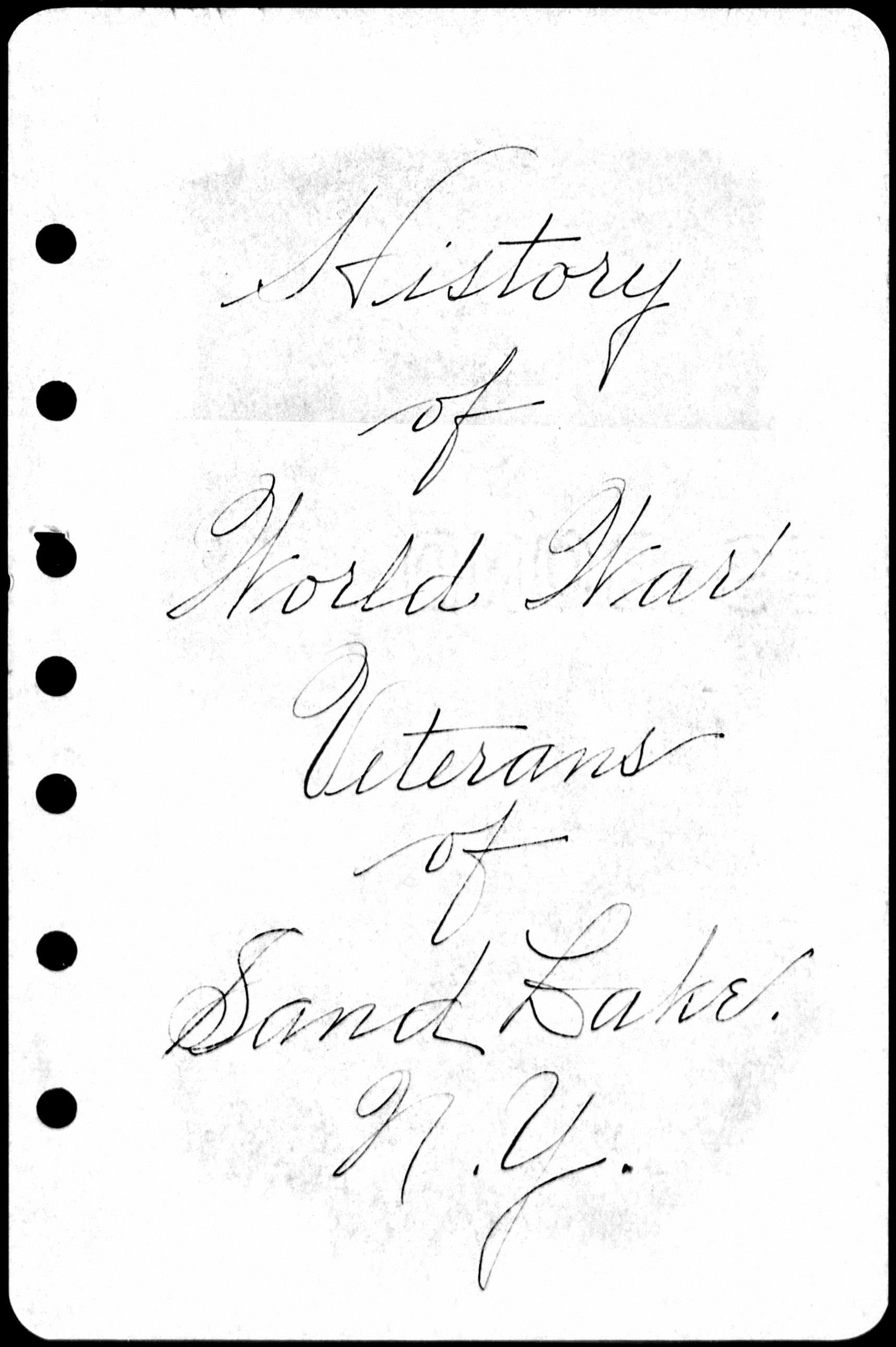 |
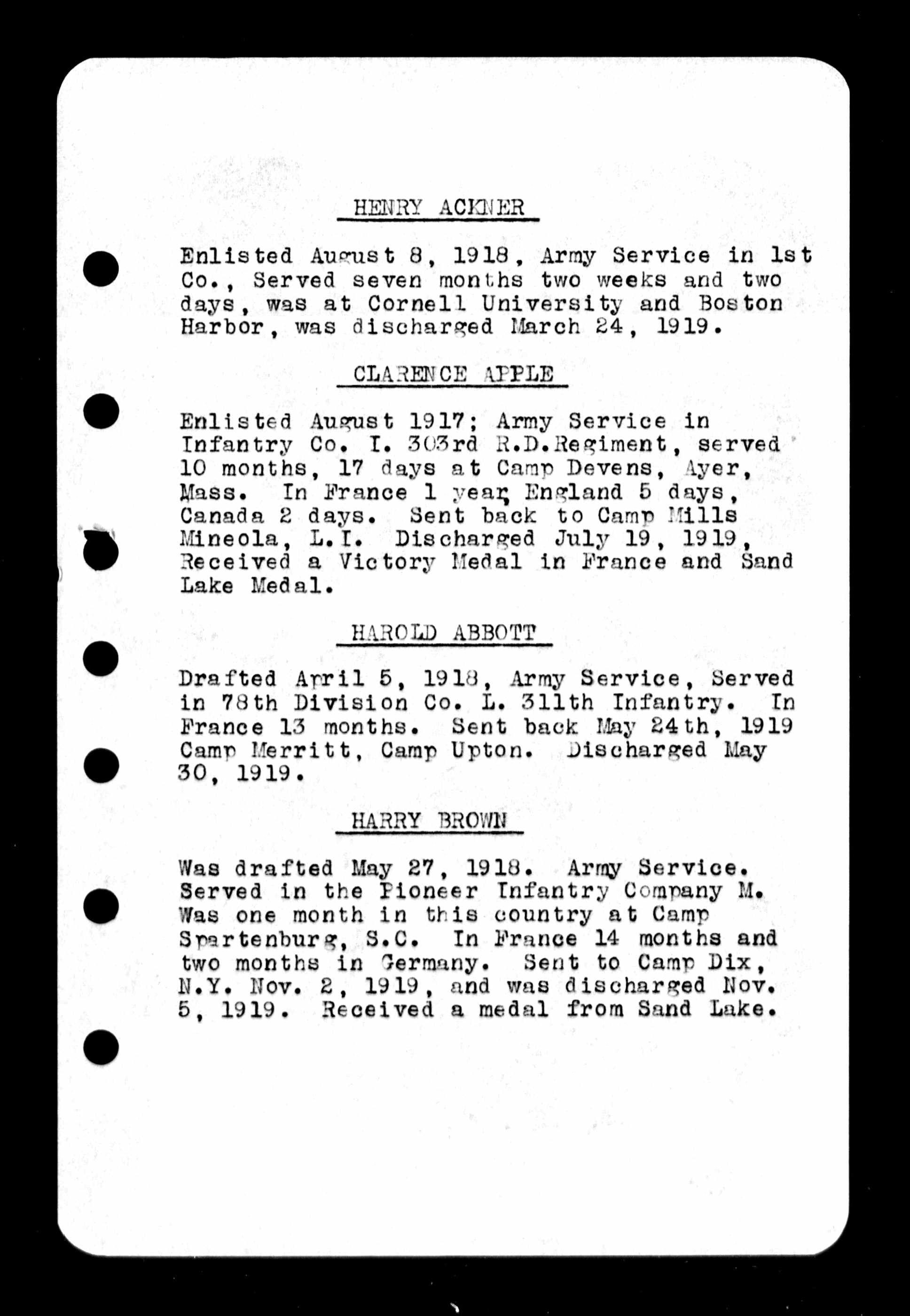 |
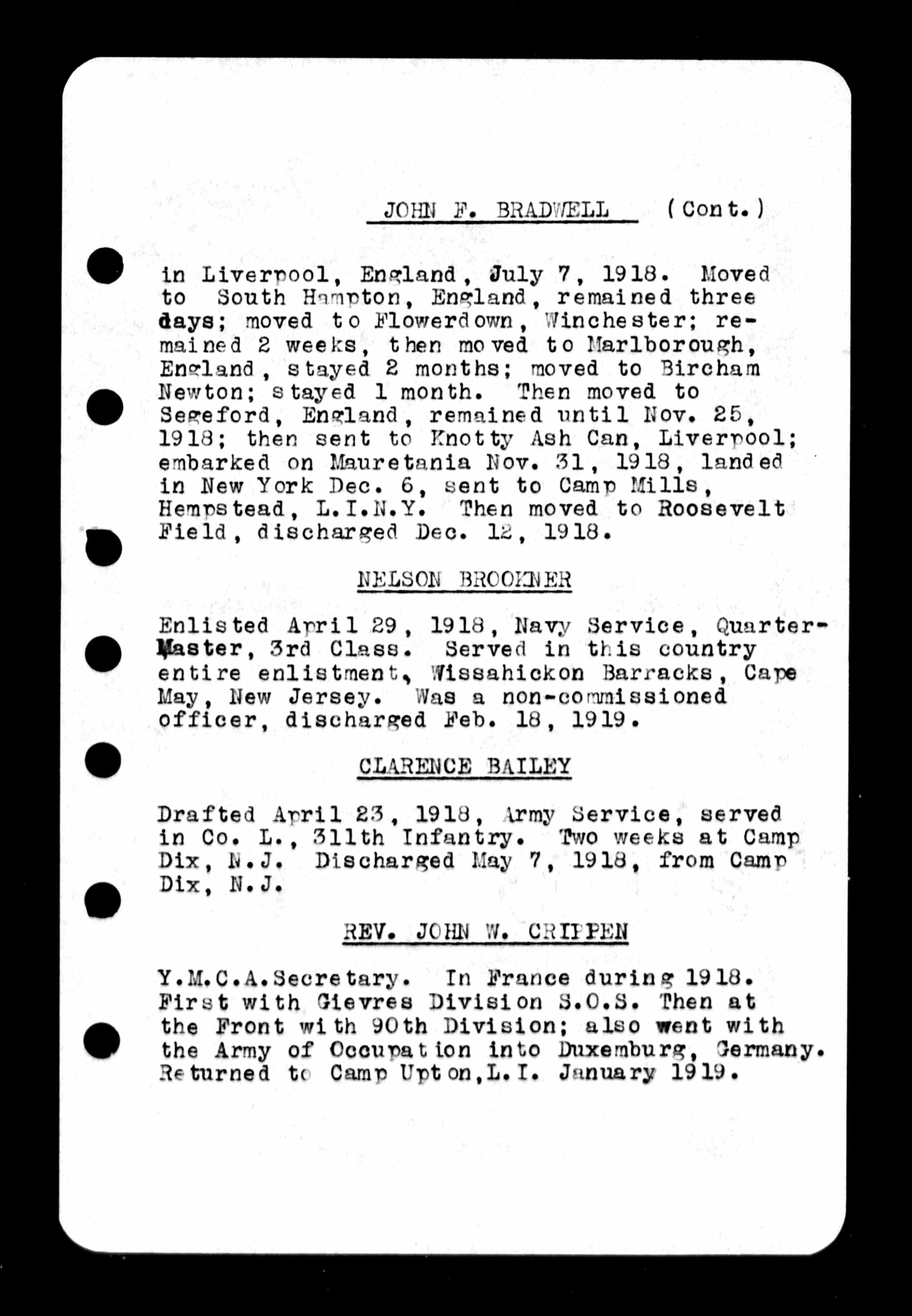 |
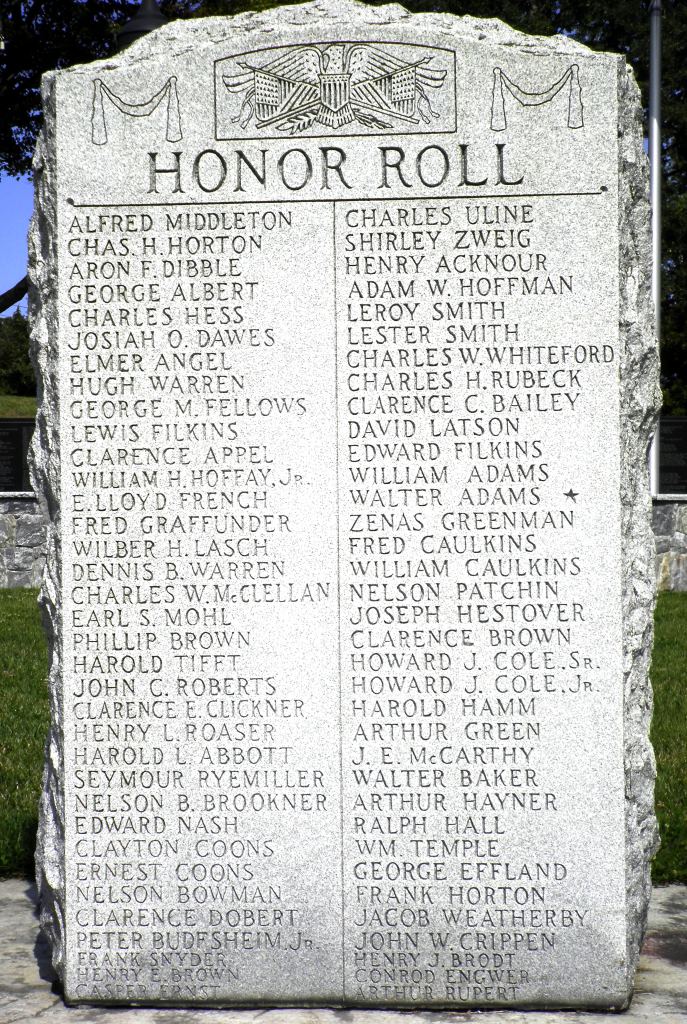 |
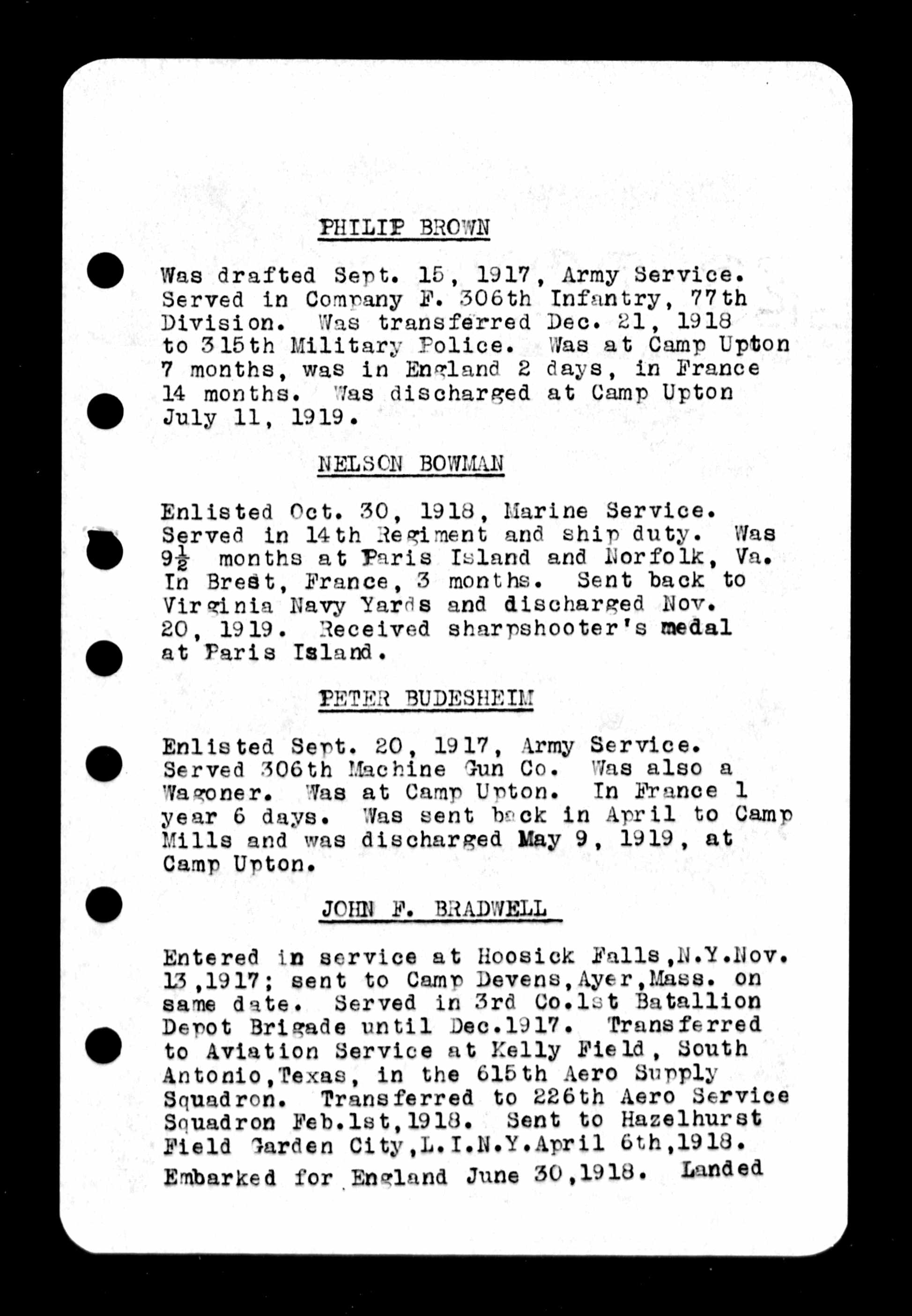 |
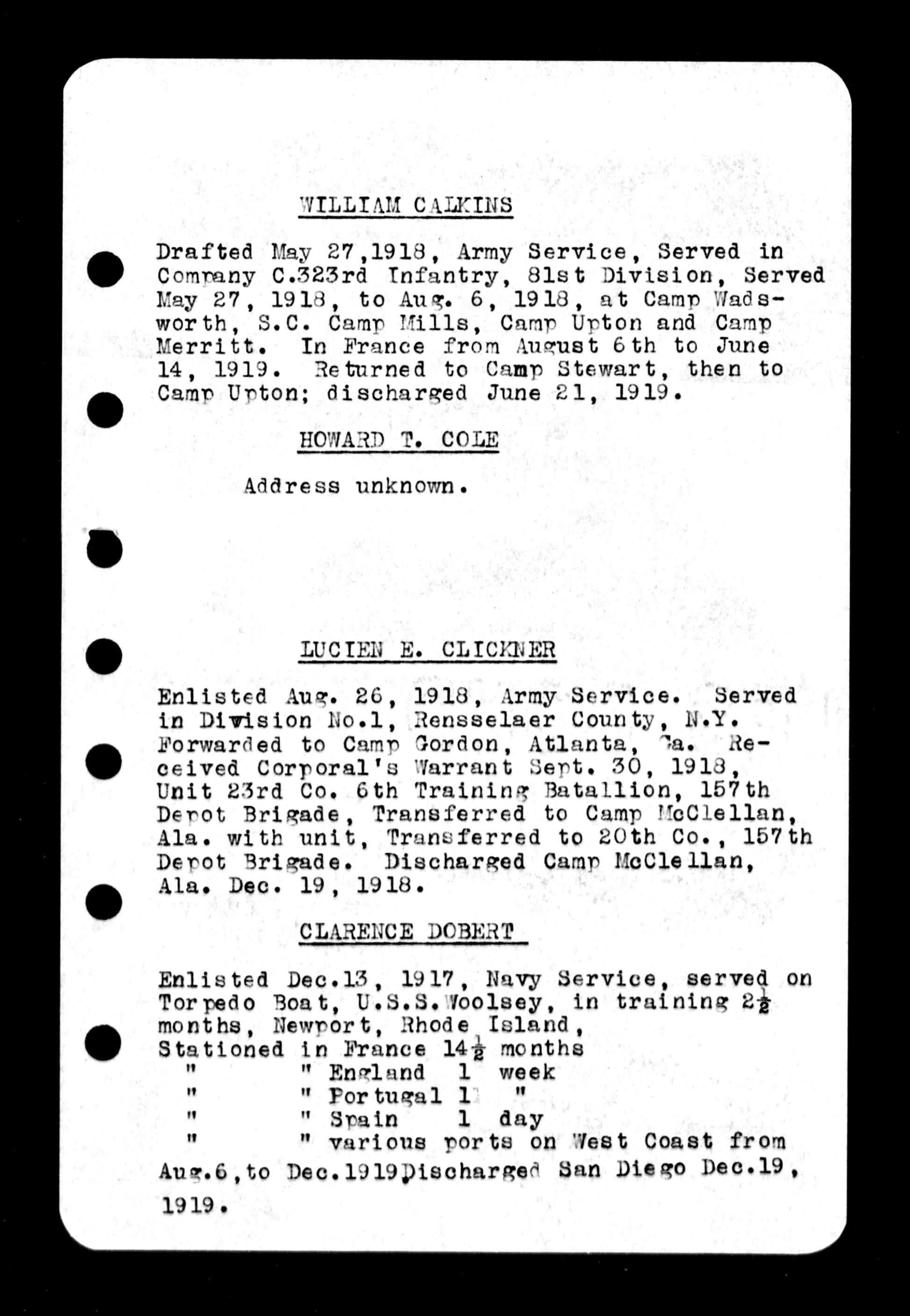 |
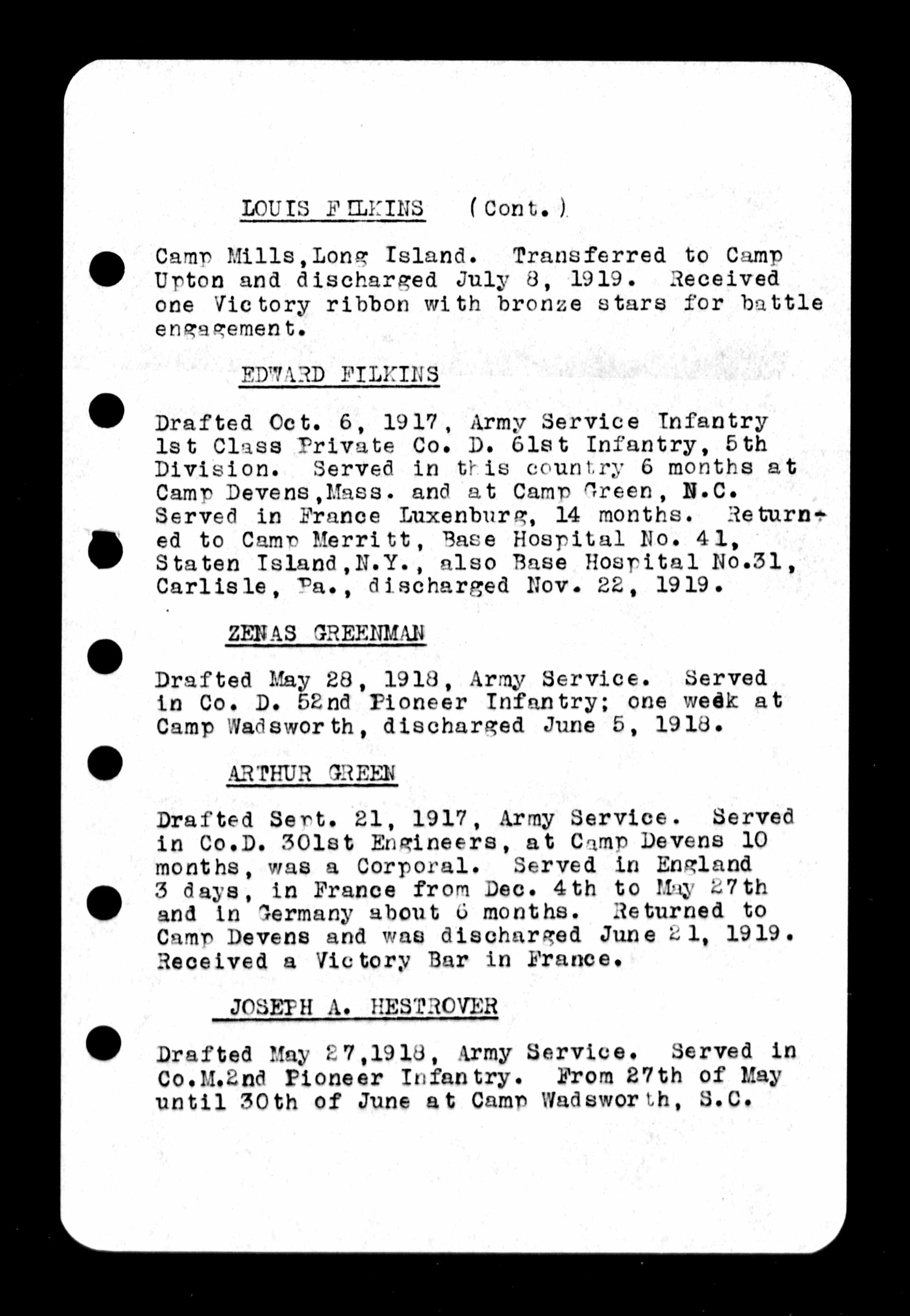 |
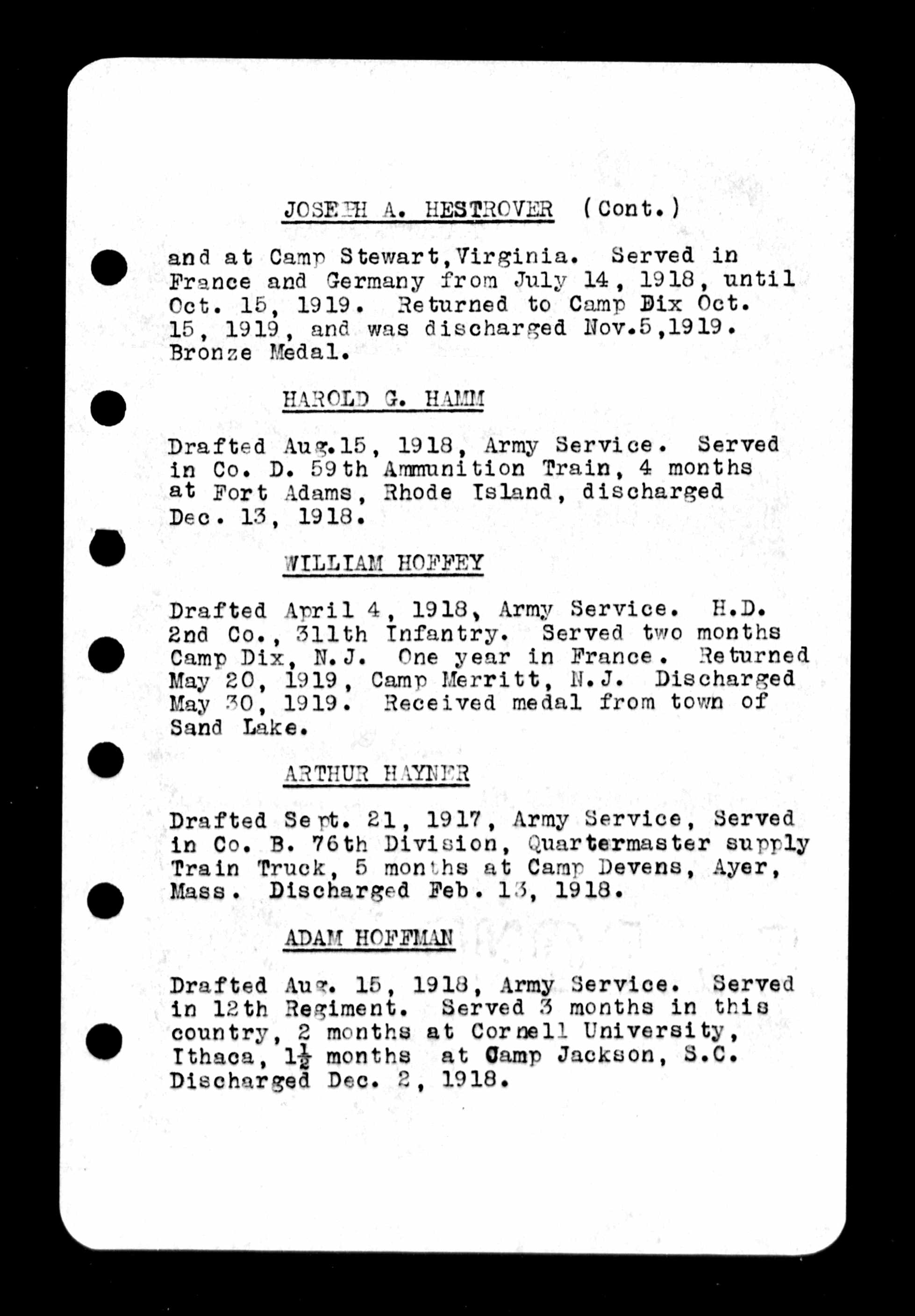 |
|
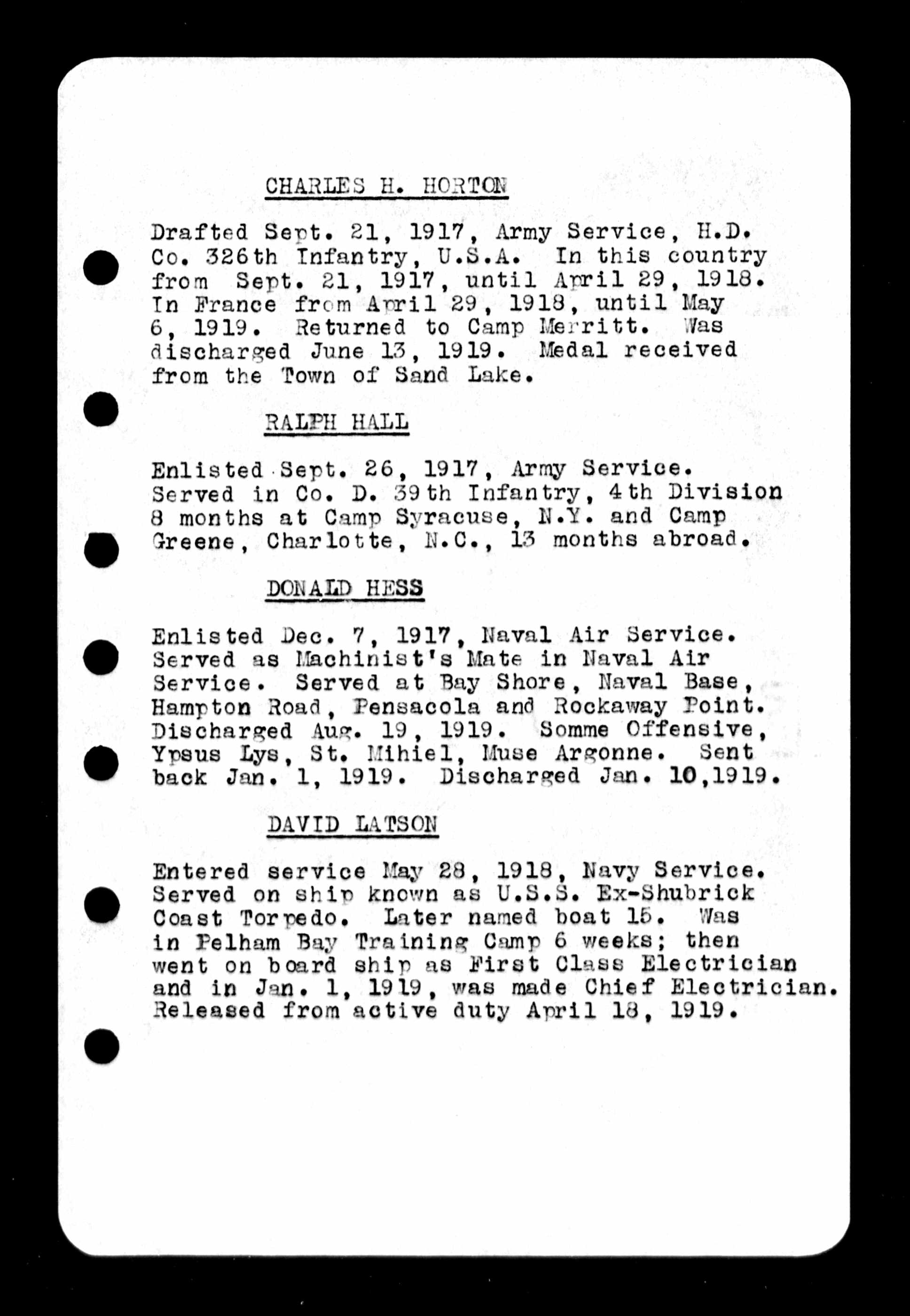 |
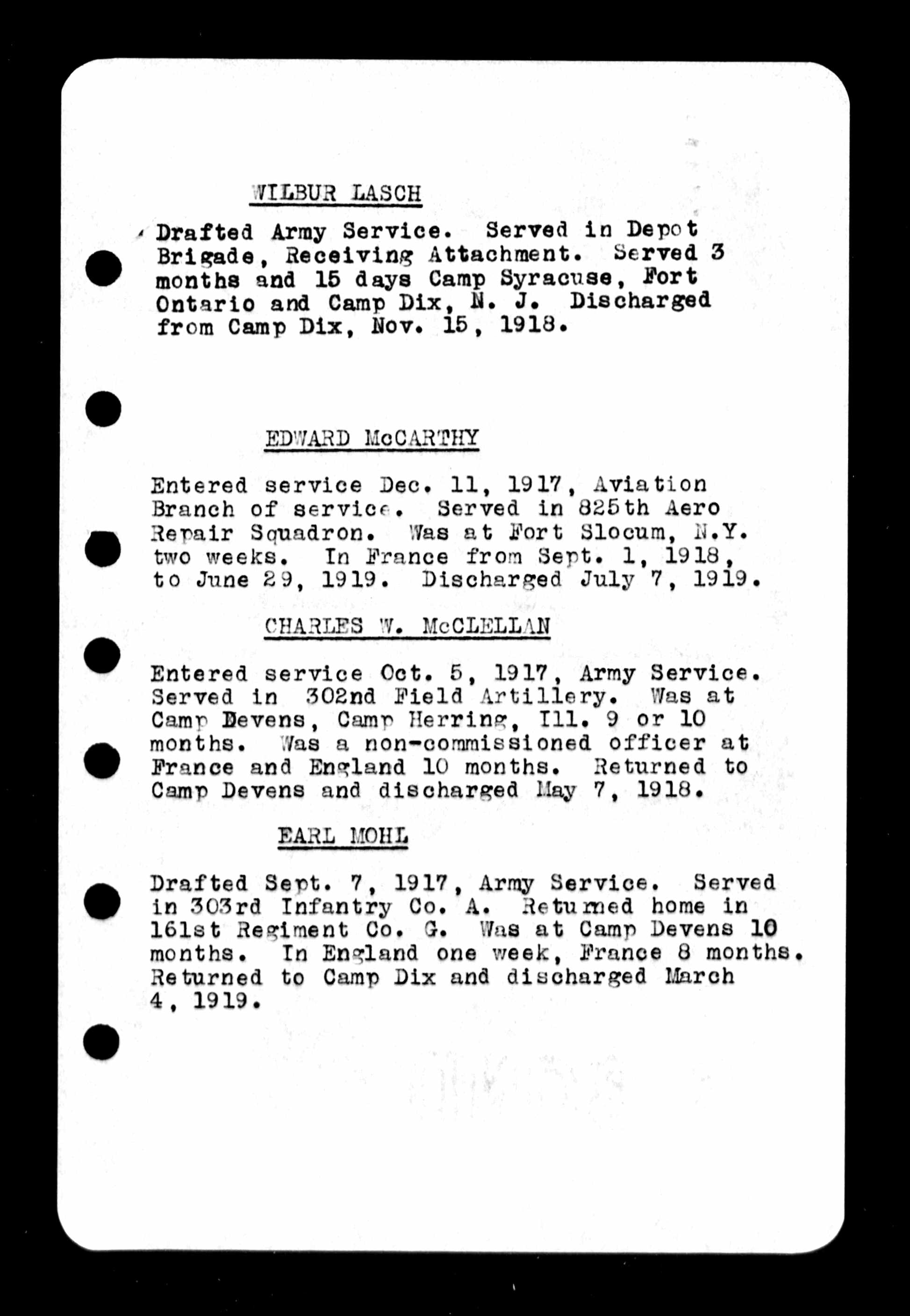 |
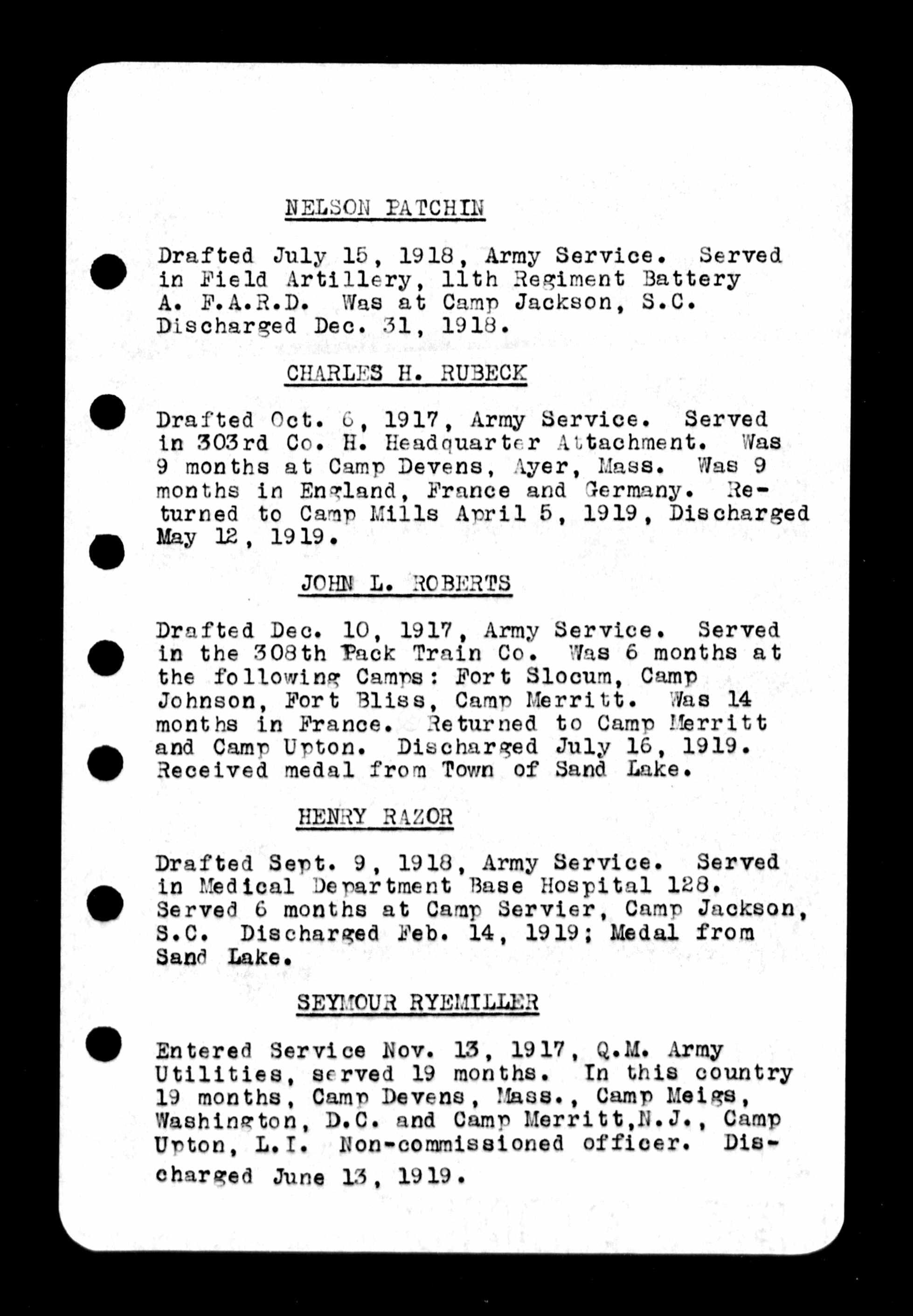 |
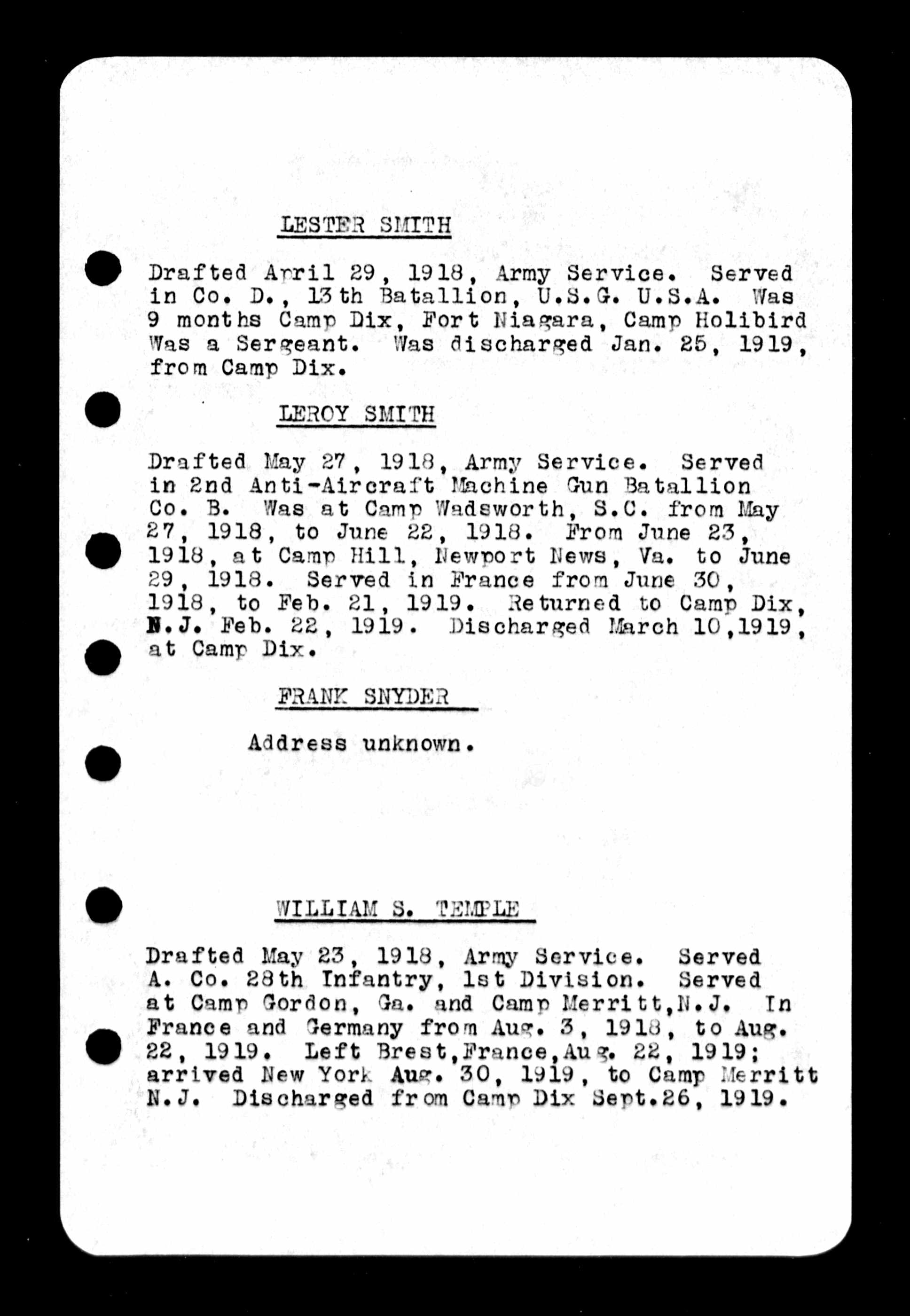 |
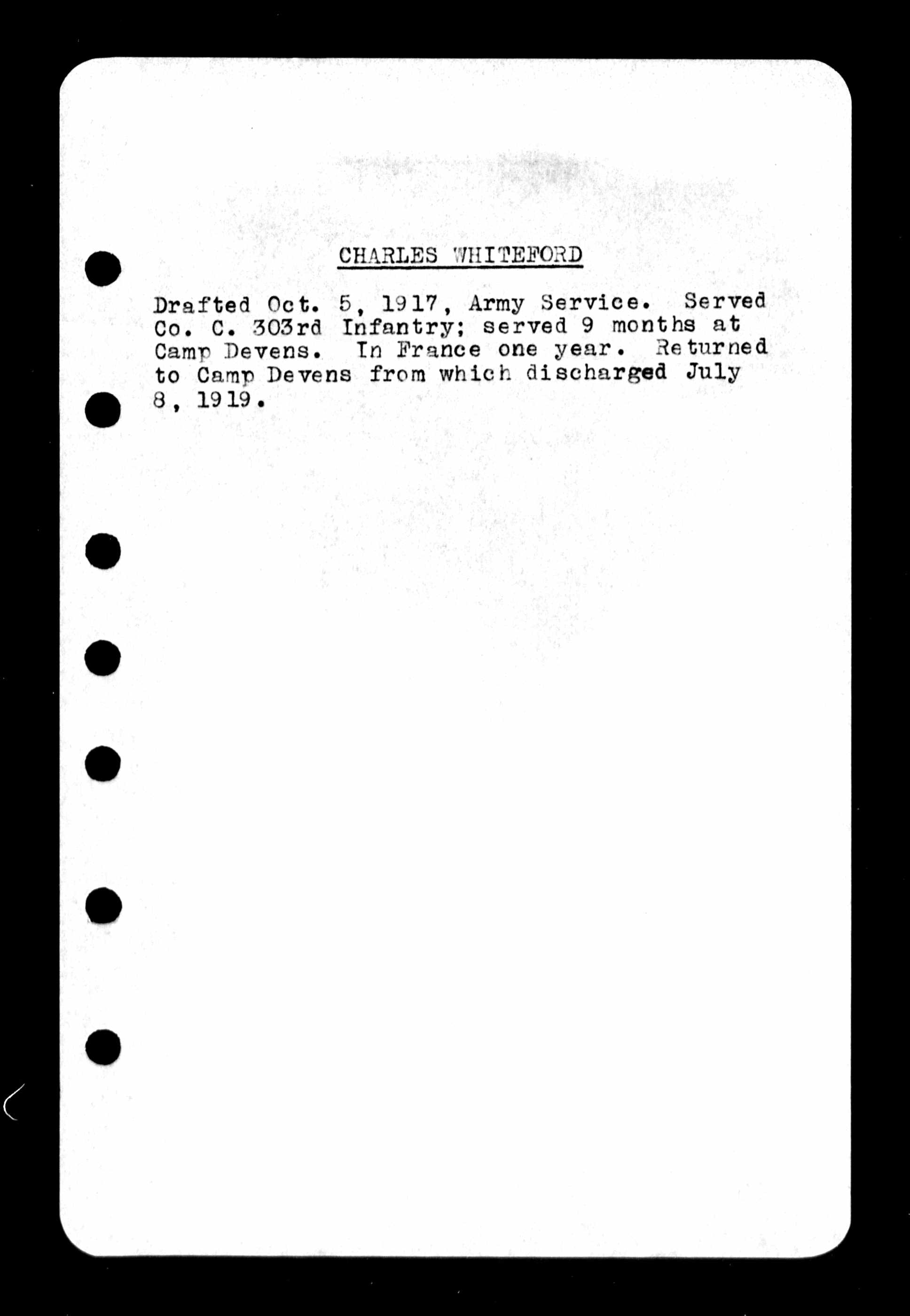 |
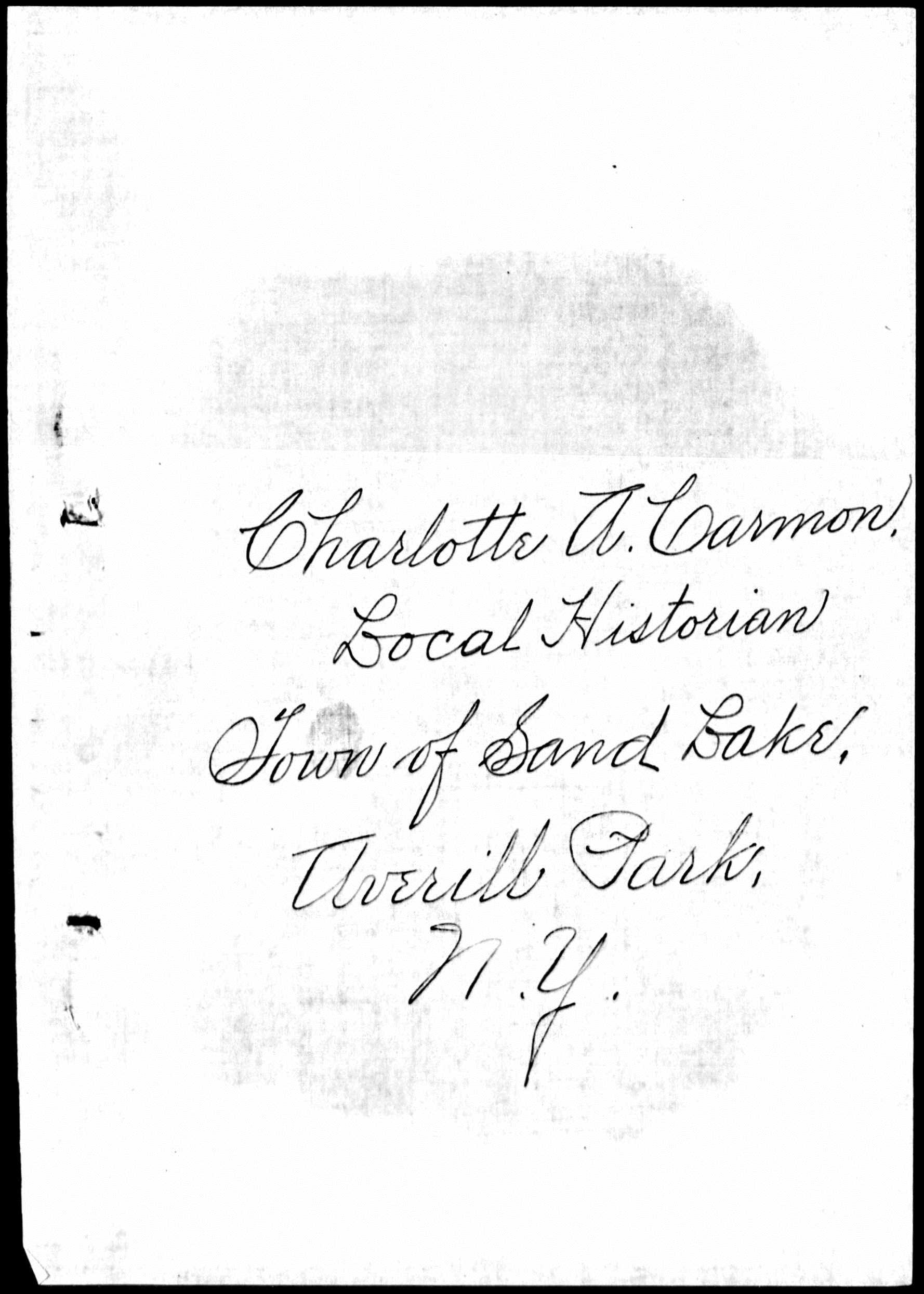 |
[NOTE: Trans-criptions of these pages can be found under individual names here; look for ("Charotte Carmon notes")!] | ||
|
Aside from the long-missing pages, there are some anomalies in these notes. For example, there is an entry for a Lucien Clickner, whose name does not appear on the monument; in fact, it is not clear if he ever was a resident of or had any particular connection to the Town of Sand Lake. Meanwhile, the unrelated Clarence Clickner is absent from Carmon's notes, although his name does appear on the Honor Roll monument. In fairness, though, Carmon's accuracy in names surpasses that of the monument, on which are a startling number of misspellings! Meanwhile, there are more than a few typos in the official service records, with not only hometown names ("Averhill Park" or "Taperton") but even the occasional surname misspelled, e.g., "Patchin" as "Patchni." Add less-than-perfect optical character recognition or misread handwriting during digitization of records (the vast majority of draft registratrion records are handwritten), and one begins to appreciate "wildcard" and other types of "less than exact match" search possibilities! |
||||||||
Back to the |
|
|
||||||